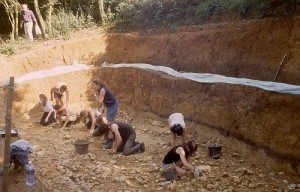Special guest editorial by Tim Holt-Wilson
What is geodiversity?
Conserving geodiversity is part of the core business of nature conservation (understood as the protection, preservation, management or enhancement and the improvement of understanding and appreciation of flora, fauna and geological and geomorphological features[1] (our emphasis)). Geodiversity is essentially the abiotic part of the natural world; it is intimately linked with biodiversity, and is the physical setting for life itself. It may be defined as the natural range or diversity of geological features (rocks, minerals, fossils, structures), geomorphological features (landforms and processes), soil and water that compose and shape the physical landscape. It is not usually defined to include landscaping, concrete, or other human landforms and products.
Introducing geoconservation
Earth heritage resources have been exploited by humans for many thousands of years, but the integrity and accessibility of these resources may be threatened in various ways. The principal threats can be summarised as:
- Loss of geological exposures and/or information;
- Damage to the physical landscape and its geomorphological features and processes;
- Damage to soil features and processes;
- Damage to groundwater and surface water;
and lastly, and perhaps most importantly:
- Lack of public understanding about geodiversity, and why it is valuable to society for its contribution to economic life, science, wildlife, leisure and recreation.
Geodiversity Action Plans (GAPs) provide a new comprehensive approach to conserving Earth heritage, setting out a management framework for geology, geomorphology, soils and water resources for a defined area or an organisation. GAPs are modelled on the successful Biodiversity Action Plan format. Since 2004 a range of Local GAPs have been prepared in the UK, covering various Areas of Outstanding Natural Beauty, counties, metropolitan areas and national parks[2]. There are aggregate company GAPs[3], and a national UKGAP is currently at an advanced drafting stage[4] .
Geoconservation management is based on the principles of the Earth Science Conservation Classification System[5]. It provides a framework for deciding the requirements of geodiversity, based on the differing vulnerabilities of three kinds of site and feature (Exposure/Extensive, Integrity and Finite), and suggests different practical strategies for their conservation.
For more information see the ‘Further reading and Resources’ page.
Footnotes:
1 Glossary of ‘Planning for Biodiversity and Geological Conservation – A Guide to Good Practice’ (ODPM, 2006).
2 See http://www.english-nature.org.uk/Special/geological/lgap/lgap5.htm .
3 See for example http://www.cgaps.org.uk/.
4 See http://www.geoconservation.com for further details.
5 Earth Science Conservation in Britain, a Strategy (Nature Conservancy Council, 1990); and amended: Geological conservation, a guide to good practice (English Nature, 2006).
